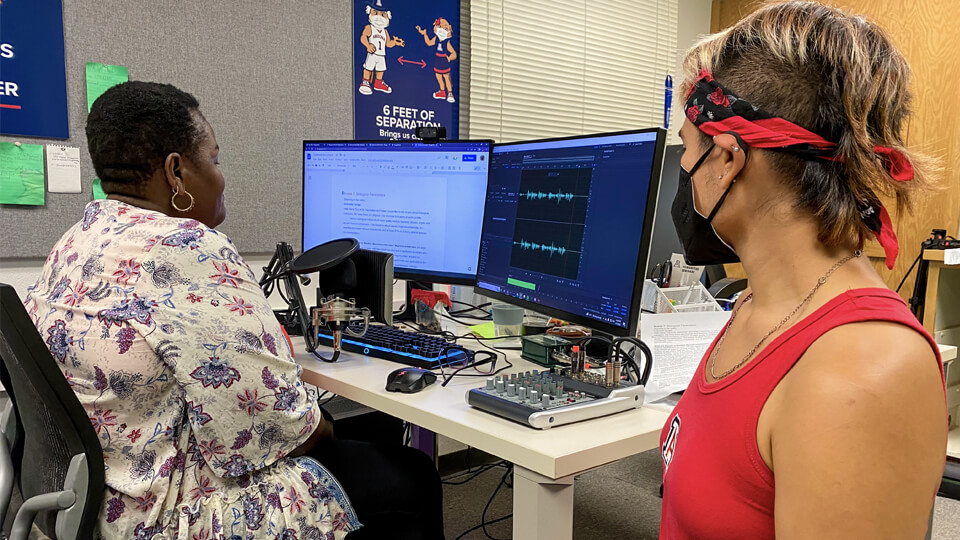
Dr. Jackie Maximillian and undergraduate student Jennifer Abarca record audio for a VR segment.
A University of Arizona student puts on their virtual reality (VR) headset and enters the Santa Cruz river, ready to take water samples while studying thousands of miles away — that is the vision of one Environmental Science professor and her team.
Dr. Jacqueline “Jackie” Maximillian, a UArizona associate professor of practice in the Environmental Science department, saw an opportunity for a better academic experience for her online research students by using VR technology. She partnered with the Center for Digital Humanities (CDH), earned a grant, and began the project at the beginning of the fall 2022 semester.
Maximillian recruited two Environmental Science faculty members to help kickstart the project: Dr. Rivka Fidel and Dr. Scott Cowell. From the CDH, Dr. Bryan Carter had two undergraduate students in mind, Jennifer Abarca and Cosmo Zappellini. Abarca specializes in 3D and extended media art, as well managing projects for the Center, while Zappellini specializes in 360-video capture and editing.
“With our current state of the world growing online, and for the students who felt left behind in their education with the pandemic, the more we can simulate an educational experience that is engaging, entertaining, and educating, the more we can help all those students who feel lost,” Zappellini said


Dr. Rivka Fidel
“Soil science is something that is very localized, so it is vital for students to see desert and floodplain soils,” Fidel said. “A lot of students don’t have the opportunity for a field trip and characterizing a soil profile is a lot different than digging a hole in your backyard or analyzing soil sent to them. With VR, they get to come to Arizona virtually and look at some real soil here in Tucson.”
For students pursuing soil science careers in Arizona, Fidel said that it is important for them to have experience with Arizona soils, posing a problem for out-of-state online students. But with the virtual reality program, the team is producing 3D scans of real soil profiles from the Santa Cruz River for students to interact with on a headset.

